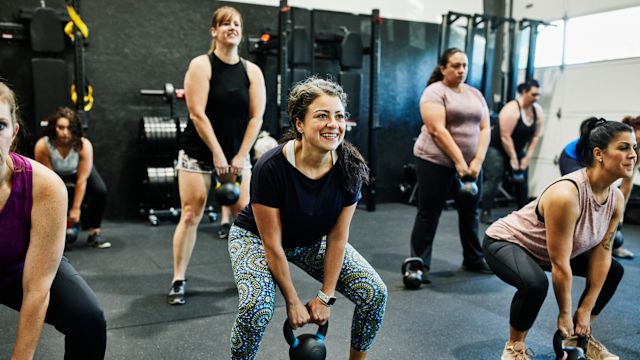Updated on October 16, 2024
Menopause marks the end of the reproductive years for the female reproductive system. Specifically, menopause refers to the final menstrual period, which can be confirmed when a person goes 12 months without a menstrual period. This occurs in three stages—perimenopause, menopause, and post-menopause.
During perimenopause a person will experience changes in the menstrual cycle and menopause-related symptoms. Perimenopause most often begins between the ages of 45 and 55, but it can begin earlier or later. On average, perimenopause lasts four to seven years, but the duration can be shorter or longer (slightly over one year and up to 14 years, in some instances). Once a person reaches menopause, a person will enter postmenopause.
While menopause is a normal and natural part of the aging process, it often includes uncomfortable and disruptive symptoms. The most common example is a group of symptoms called vasomotor symptoms (VMS). These are sudden episodes of feeling overly warm or hot, sweating, flushed skin, and increased heartrate, often followed by chills. VMS are also known as hot flashes, and VMS that occur during sleep are called night sweats.
Menopause is also associated with complications, including osteoporosis (bone loss) and an increased risk of cardiovascular disease. Working with a healthcare provider is essential to identifying and addressing these complications.
The benefits of exercise during menopause
Regular exercise is beneficial to everyone. For people who are experiencing menopause, regular exercise may have a number of specific benefits to health and well-being.
- Some studies have found that strength training exercises help reduce VMS. (However, more research is needed on this topic.)
- Weight-bearing activities can help improve bone density. Weight-bearing activities include activities like climbing stairs, dancing, and strength training.
- Exercise is recommended along with diet to protect against cardiovascular disease risk factors during and after menopause.
- Regular exercise can help a person maintain a healthy weight. Weight gain during perimenopause and after menopause is common.
- Regular exercise is associated with better mental health, lower stress, and better sleep during menopause.
- Exercise is recommended to reduce the loss of muscle mass and strength (sarcopenia) associated with menopause.
- Exercise has been shown to improve overall quality of life during menopause.
It’s important to note that exercise alone is not recommended as a treatment for symptoms related to menopause. Anyone experiencing menopause should work with a healthcare provider to address their specific symptoms and healthcare needs.
What types of exercise do you need?
It’s always a good idea to talk to a healthcare provider before starting a new exercise routine or a new type of exercise—especially if it has been some time since you have exercised regularly.
The general recommendations are:
- At least 150 minutes of aerobic exercise per week. Aerobic exercise uses large muscle groups and continuous movement, and it increases heart rate and oxygen demands. Examples include walking, jogging, hiking, cycling, swimming, and using exercise equipment like a stair climber or elliptical.
- Muscle-strengthening exercises 2 to 3 days per week. These include activities like bodyweight exercises (pushups and squats), lifting weights, and general labor, such as digging in a garden.
Exercises to improve balance and flexibility are also recommended, especially for people who are older. Yoga and stretching can improve flexibility. Activities like balancing on one foot, walking heel-to-toe, and walking backward can improve balance. Strengthening the legs, back, and abdominal muscles will also help improve balance.
One of the most important things you can do is to choose exercises and activities you enjoy—this will help you stay consistent week after week. Remember, there are many types of exercises that can benefit you.
Always keep safety in mind, and again, it’s a good idea to talk to a healthcare provider before starting a new form of exercise. You should also consider working with a physical therapist or certified trainer.






